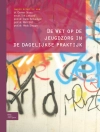This book provides a comprehensive, global exploration of the scale, scope, threats, and drivers of wildlife trafficking from a criminological perspective. Building on the first edition, it takes into account the significant changes in the international context surrounding these issues since 2013. It provides new examples, updated statistics, and discusses the potential changes arising as a result of COVID-19 and the IPBES 2019 report. It also discusses the shift in trafficking ‘hotspots’ and the recent projects that have challenged responses to wildlife trafficking. It undertakes a distinctive exploration of who the victims and offenders of wildlife trafficking are as well as analysing the stakeholders who are involved in collaborative efforts to end this devastating green crime. It unpacks the security implications of wildlife trade and trafficking and possible responses and ways to combat it. It provides useful and timely information for socialand environmental/life scientists, law enforcement, NGOs, and policy makers.
Daftar Isi
Chapter 1. Introduction.- Chapter 2. Contemporary Patterns.- Chapter 3. Significance.- Chapter 4. Construction of Harm and Victimhood.- Chapter 5. Construction of Blame and Offending.- Chapter 6. The Fight Against Wildlife Trafficking.- Chapter 7. Transnational Collaborations.- Chapter 8. Reflecting on Wildlife Trafficking.
Tentang Penulis
Tanya Wyatt is Professor of Criminology at Northumbria University, UK. Her research focuses on green crimes, such as wildlife trafficking and animal welfare, and these crimes’ intersection with organized crime, corporate crime, and corruption.











